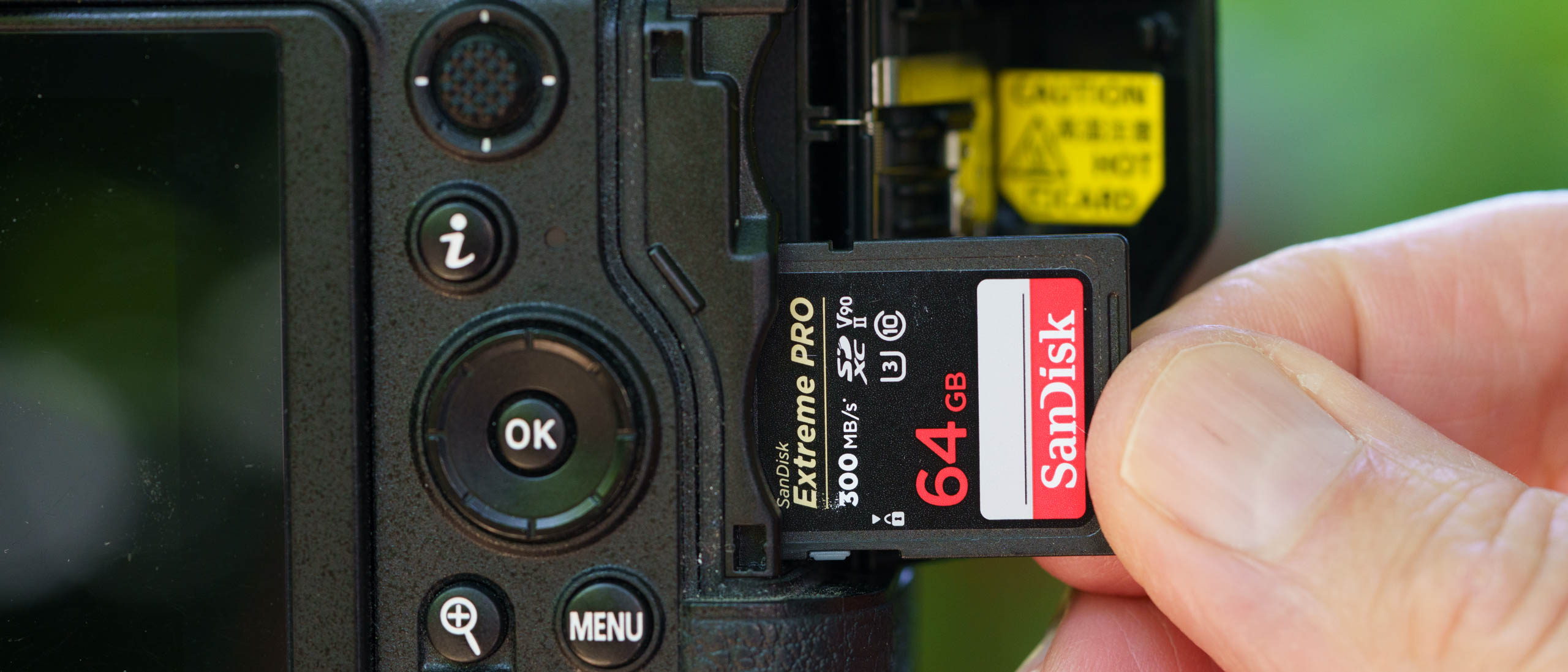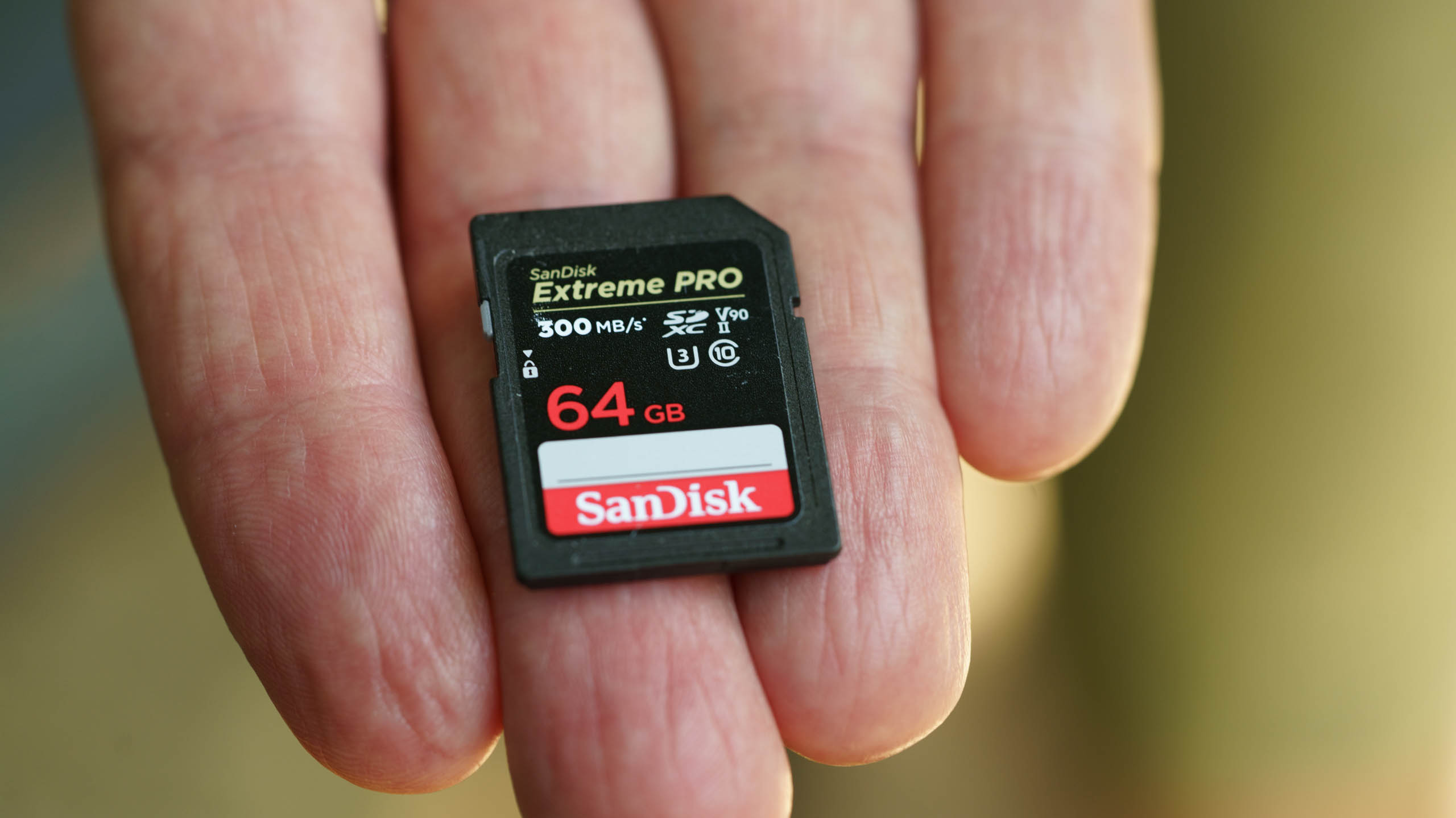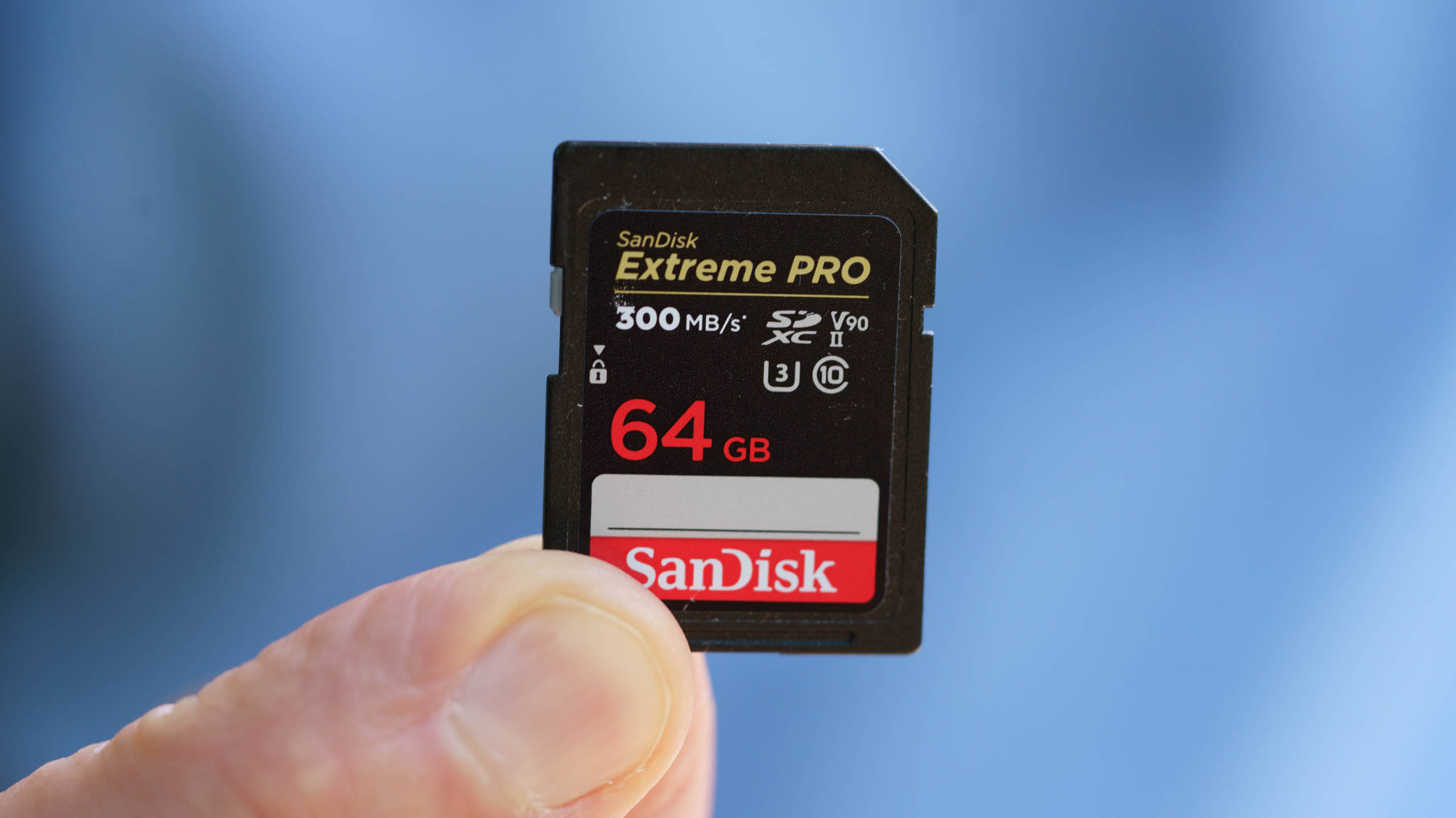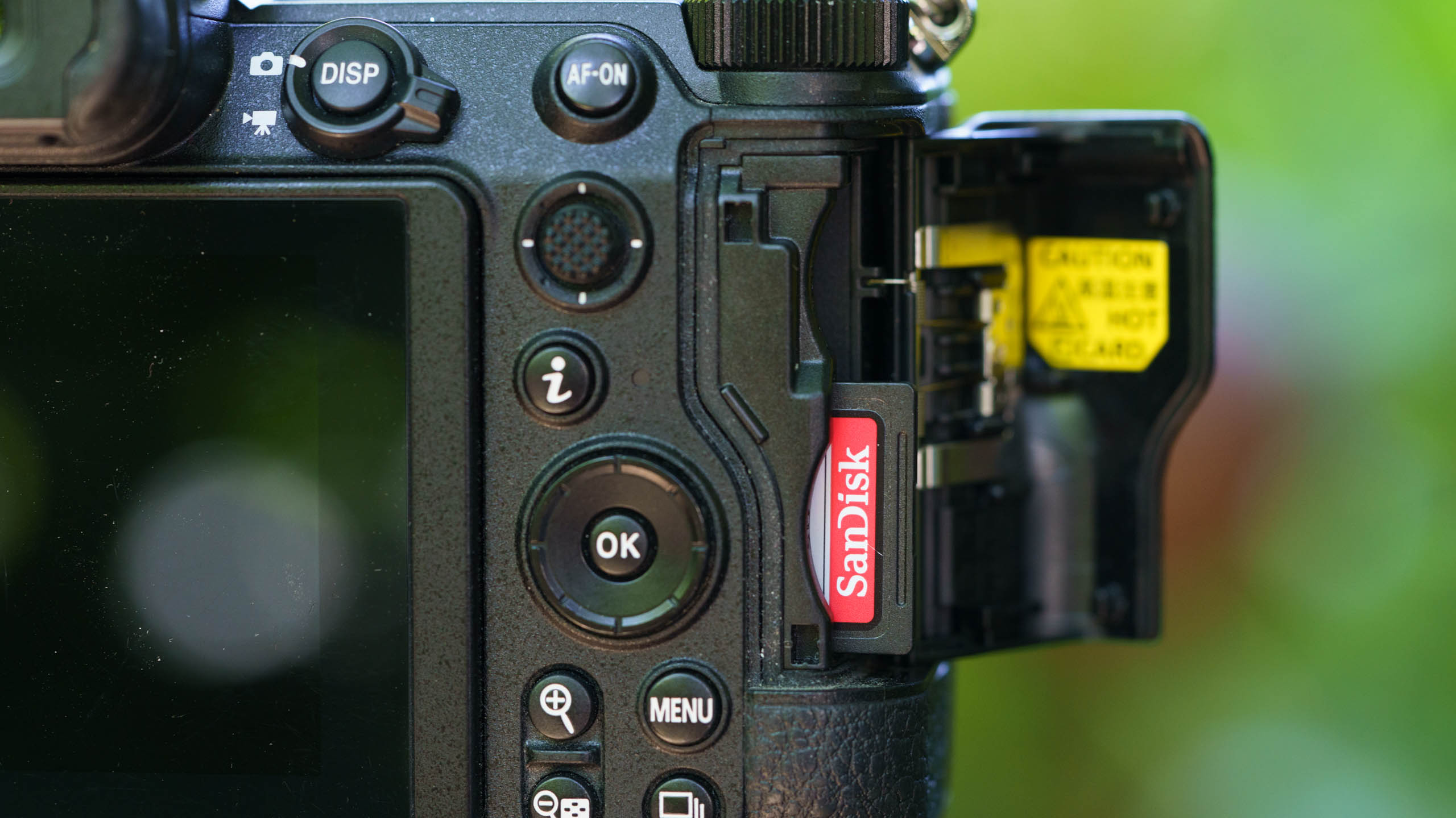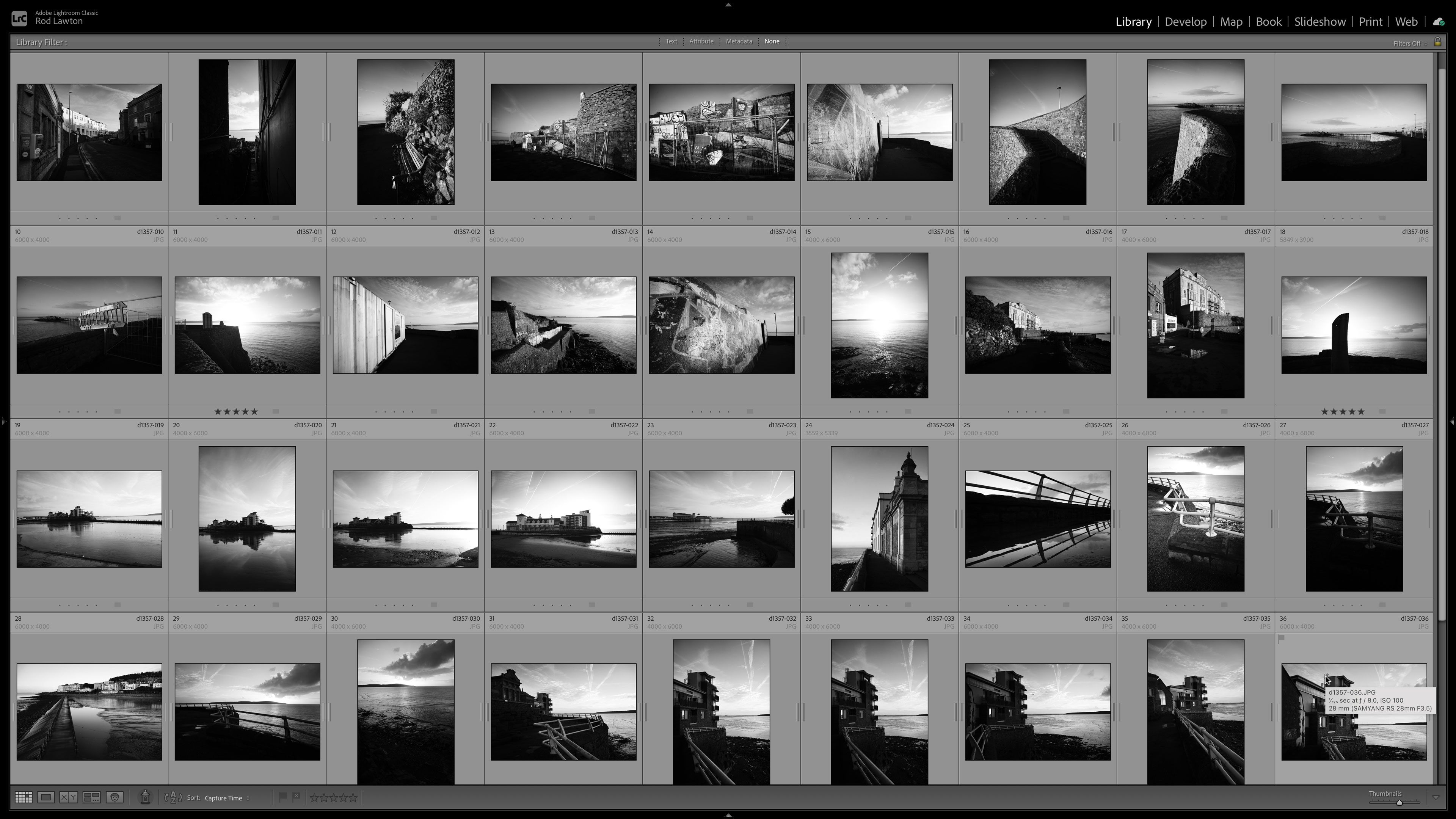Digital Camera World Verdict
The SanDisk Extreme PRO 300MB/s SDXC UHS-II card gives good service for day-to-day photography, but it proves a little sluggish in comparison with some of the competition when transferring images to a computer and it doesn’t enable the best Jpeg burst depths.
Pros
- +
Capacities starting at 32GB
- +
V90 video speed class
- +
Impressive speed in software tests
Cons
- -
In-camera performance doesn’t match some other cards
- -
Slow transfer to a computer
- -
Expensive
Why you can trust Digital Camera World
SanDisk and its parent company, Western Digital, is one of the biggest names in memory cards and digital storage. It also offers an extensive range of SD-type cards and when you’re browsing the Extreme PRO series, it’s important to keep an eye on the speed markings as there are several available including 95MB/s, 100MB/s, 170MB/s, 200MB/s and 300MB/s. Only the 300MB/s cards are UHS-II compliant.
I’ve tested the 300MB/s version which is available with capacities of 32GB, 64GB and 128GB. The 32GB card is an SDHC device, whereas the 64GB and 128GB cards are SDXC devices.
Write speed of up to 260MB/s enable the cards to cope with rapid-fire photography or 4K and 8K video recording. Meanwhile the read speed maxes out at 300MB/s which should enable fast file transfer to a computer. The cards also have a V90 rating which means they have minimum read and write speed of 90MB/s for reliable 4K video recording.
Specifications
Max read speed: 300MB/s
Max write speed: 260MB/s
Available capacities: 32GB, 64GB, 128GB
Build and handling
As usual, the SanDisk Extreme PRO 300MB/s SDHC/SDXC UHS-II cards measure 24 x 32 x 2.1mm, which means they slip neatly into a camera or card reader’s slot. After heavy use, the 64GB card that I have been using shows only slight signs of wear on the label.
The best camera deals, reviews, product advice, and unmissable photography news, direct to your inbox!
A switch on the left side of the card allows the card to be locked if you want to protect its contents or prevent additional images from being written to it. Helpfully, and unlike the cards from Kingston, Lexar, Manfrotto and PNG, the SanDisk card has a lock symbol on its label that indicates the card is locked when the switch is in the down position.
According to SanDisk, the Extreme PRO 300MB/s SDHC/SDXC UHS-II cards are shock-proof, temperature proof, waterproof and X-ray-proof.
Performance
For my first test of the 64GB SanDisk Extreme PRO 300MB/s SDXC UHS-II, I popped it into the 45.7MP Nikon Z 7II and set the camera to shoot at its fastest rate (10fps) with the focusing set to manual to rule out any focusing delays. When the camera was set to record 14-bit uncompressed raw files I was able to capture 38 images in a continuous sequence - putting it on par with the PNY X-Pro 90 SDXC UHS-II card and ahead of the Manfrotto Professional SDXC UHS-II card.
Switching to record Fine* Jpegs boosted the burst depth significantly to 65 images, but that’s someway behind what was possible with the Lexar Professional 2000x SDHC/SDXC UHS-II, Kingston Canvas React Plus SDHC/SDXC UHS-II and PNY X-Pro 90 SDXC UHS-II cards. Shooting Fine-quality Jpegs increases the burst depth again, but at 78, it’s still behind the other cards I’ve tested recently, only beating the Manfrotto Professional SDXC UHS-II card.
Also, despite chalking up impressive read and write speeds of 252MB/s and 207MB/s respectively, the SanDisk Extreme PRO 300MB/s SDXC UHS-II proved to be one of the slower cards when it comes to moving files onto a computer. The shortest time I was able to transfer 100 Fine* Jpegs and 100 14-bit uncompressed raw files from the Nikon Z 7II (adding up to 9.7GB), was 2 minutes 37 seconds - that’s minute slower than the Lexar Professional 2000x SDHC/SDXC UHS-II.
When testing the card’s ability to record 8K video, like the other UHS-II SDXC cards I’ve tested, it could cope with the lower-quality options, not raw. However, the camera overheated after around 15 minutes, whereas the other cards managed to capture closer to 30minutes.
Verdict
While the SanDisk Extreme PRO 300MB/s SDXC UHS-II card performed well in our software-measured speed test and returned good transfer rates, the Jpeg burst depths that it enables lag behind those some of the competition. This is unlikely to be an issue for many photographers, but keen sports and action photographers who shoot Jpegs rather than raw files may want to be able to shoot longer sequences.
Also, although still respectable, the time taken to transfer images to a computer is a little longer than with some other cards.
Lastly, it’s disappointing that although SanDisk offers a 32GB card, it is more expensive than some 64GB cards.
Read more
Best memory cards
Best memory card readers
Best CFexpress cards
What is CFexpress Type A?
Best CFast cards
Angela has been testing camera gear from all the major manufacturers since January 2004 and has been Amateur Photographer’s Technical Editor and Head of Testing for Future Publishing’s photography portfolio (Digital Camera Magazine, PhotoPlus: The Canon Magazine, N-Photo, Practical Photoshop, Photography Week and Professional Photography magazines, as well as the Digital Camera World and TechRadar websites). She is the founder of SheClicks - a community group that encourages and supports female photographers.
